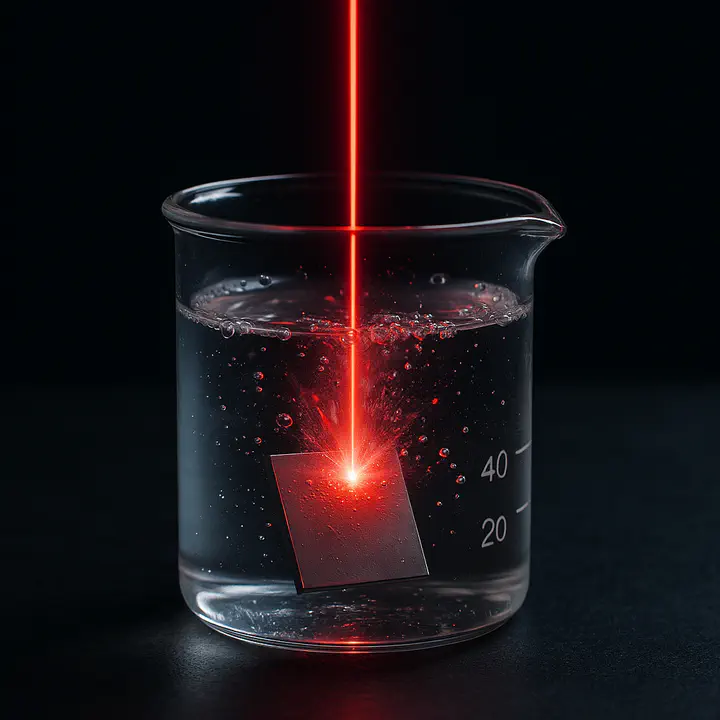Laser Ablation Synthesis in Solution (LASiS)
 Image Generated by ChatGPT
Image Generated by ChatGPTOverview
Laser Ablation Synthesis in Solution (LASiS) is a physiochemical synthetic technique for the production of nanoparticles. By controlling the power and wavelength of the laser, composition of the solution or ablation medium, and the ablated material itself, high value materials can be produced without the production of chemical waste.
Current Scope
LASiS is a mature technique, with a demonstrated scientific basis both overseas, and within Curtin University by Prof. Mark Buntine. However with the reduction of cost and increased capabilities of modern laser systems, there is the potential to produce high value materials at comparable scale to wet chemistry techniques.
Current work in the Watson Group involves the construction of a LASiS platform for nanoparticle production with support from the Resources Technology and Critical Minerals Trailblazer through their Early Career Researcher Grant Program.

We hope to commence nanoparticle production and the exploration of these methods in August 2025!
Why LASiS?
Traditional wet chemistry techniques have been used since the late 1800s for the production of metal nanoparticles. However, these synthetic routes typically involved the use of harsh reducing agents such as sodium borohydride (NaBH4). This not only produces waste biproduct but introduces hazards for handling safely. While LASiS utilises powerful (typically Class 4) laser systems, the avoidance of using these reductants and general workflow lends itself to scaling to industrially relevant production rates.
As a photophysical synthesis process the tunability of LASiS is governed by the variability of the ablation system. This can include the wavelength of light used in the ablation process, the photon flux at the surface of the material, the temperature and by extension viscosity of the solvent used and the presence of salts in the solvent mixture. These parameters also differ depending on the ablation material and target size distribution.

Current Students
Collaborators
Contact
For more info, contact peter@watsonlaserlab.com.